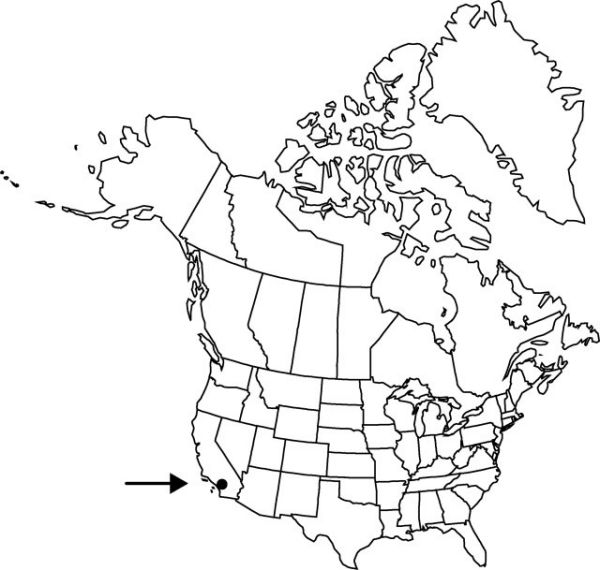Allium munzii
Aliso 13: 415. 1992.
Bulbs usually solitary, not clustered on stout, primary rhizome, ovoid, 1–1.5 × 0.8–1.4 cm; outer coats enclosing single bulb, reddish-brown, membranous, lacking cellular reticulation or cells arranged in only 2–3 rows proximal to roots, ± quadrate, without fibers; inner coats pale-brown to white or pink, cells obscure, quadrate. Leaves persistent, withering from tip by anthesis, 1, basally sheathing, sheath not extending much above soil surface; blade solid, terete, 15–25 cm × 0.5–1.5 mm. Scape persistent, solitary, erect, solid, terete, 15–35 cm × 1–2.5 mm. Umbel persistent, erect, compact, 10–35-flowered, hemispheric, bulbils unknown; spathe bracts persistent, 2–3, 5–7-veined, lanceolate to ovate, ± equal, apex abruptly acuminate. Flowers campanulate, 6–8 mm; tepals erect, white with greenish midveins, becoming deep pink to red in fruit, ovate to nearly round, ± equal, becoming papery in fruit, margins entire to finely denticulate, apex obtuse (rarely acute), shallowly emarginate; stamens included; anthers yellow; pollen yellow; ovary crested; processes 6, prominent, ± triangular, margins entire, apex emarginate; style linear, equaling stamens; stigma capitate, 3-lobed, lobes slender, recurved; pedicel spreading, straight, 7–12 mm, becoming rigid and ± reflexed in fruit. Seed-coat dull; cells minutely roughened. 2n = 14.
Phenology: Flowering Apr–mid May.
Habitat: Clay soil on grassy slopes
Elevation: 400–900 m
Distribution

Calif.
Discussion
Of conservation concern.
Selected References
None.
Lower Taxa
"thicker" is not a number."broad" is not a number.
